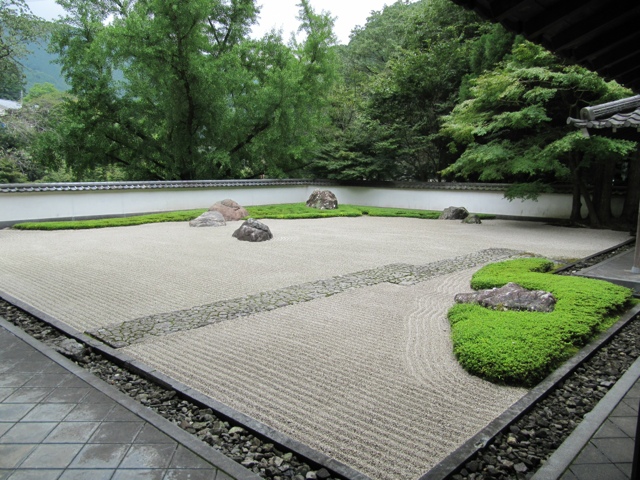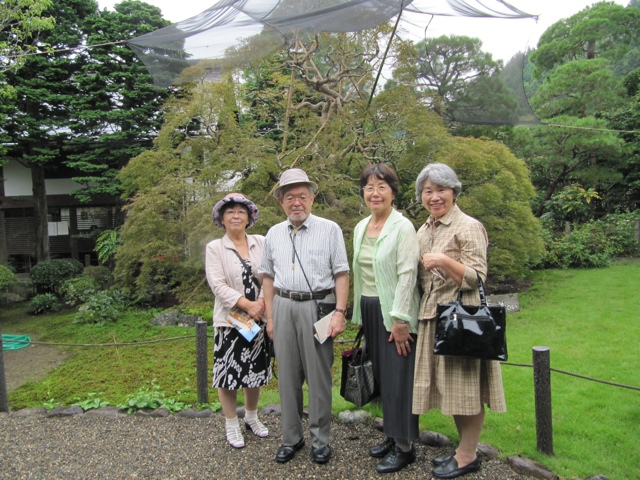On September 19, 2012 we left Komatsuka, Ibaraki and took various modes of transportation to go to Tachikawa Eki (train station) and from there a local bus to ask the Immigration Office about our status and the maximum allowable duration of our stay. The date is December 9, 2012 without an extension of my visa. From here we continued on to Kabe Eki in Ome on the edge of Tokyo where Yayoi's brother and sister in law live and who are our Japanese sponsors. We accidentally met Atsuko-san at the bus stop in front of Kabe Eki and went with her to her home where we had a delicious dinner.
For us Ome has been our first port of call when we arrive in Japan and we have never considered it to be a prime tourism area. But this attitude needs to change. Vacation in Japan frequently means a trip to a hot spring resort or Onsen. On September 20, 2012 we took a bus to Ome Eki and then a taxi to Kampo Onsen. It is located on a very scenic stretch of the Tamagawa River. We soaked in the hot water, had a delicious multi-course banquet, soaked again. Next morning we enjoyed a buffet style breakfast with a wide variety of very Japanese and American style foods available.
At one time Ome will have been an independent community apart from Tokyo. There are many old buildings in the areas of Ome remote from the main train stations. The unique aspect of these is the presence of advertising on the walls dating back to the fifties and sixties. Posters for the movie 'Gone with the Wind' and some of the old John Wayne movies can be seen. Instead of large department stores these streets are lined with fascinating small shops specializing in a variety of businesses.
September 21, 2012 after breakfast the four of us were picked up by a friend Kaidoh-san. She is a very competent driver and tour guide.
First she took us to see the second home of one of Japan's best loved authors, Eiji Yoshikawa. He was a very prolific writer including four books that have been translated into English. I have read two of these Taiko and Musashi at least twice. The two other works translated to English are The Heike Story and his autobiography Fragments of a Past. My inability to read Japanese denies me the full enjoyment of many museums in Japan. His second home is situated within a very beautiful garden complex, expressed in multiple photographs on our Picasa web site. His wife operated a restaurant nearby which we visited in the early afternoon.
But first we went to see an art gallery of the artist Kawai Gyokudo who was a resident of Mitake in Ome-shi. He painted a variety of Japanese works dealing with nature and its relationship with people. There were at least four I would have been happy to acquire. Outside was a beautiful raked sand and rock garden rivaling the world famous garden of Ryoanji in Kyoto.
Next we were taken to the Sawanoi Museum of Traditional Japanese Hair Ornaments. Hair ornaments have been used for thousands of years, but they reached an apex in the Genroku era of 1688-1703. The museum is located near the Tamagawa River and a walk down near the river reveals a variety of photogenic scenery which can be viewed on our Picasa web site.
But we were getting hungry even after that delicious buffet breakfast. So off we went to the restaurant formerly operated by the wife of Eiji Yoshikawa. It's name is 'Japanese apricot with red blossoms garden (Ome)'. It served a variety of dishes including "kuri gohan" or rice with chestnuts. Dessert was an interesting firm jelly that was dipped in a plum sauce. The jelly itself is made using a complex process from the roots of the kudzu vine. The name Ome is the Japanese word for plum and usually refers to the green plums that are used in a variety of ways.
Click on Ome Tokyo Tourism to see photographs on Picasa.



No comments:
Post a Comment